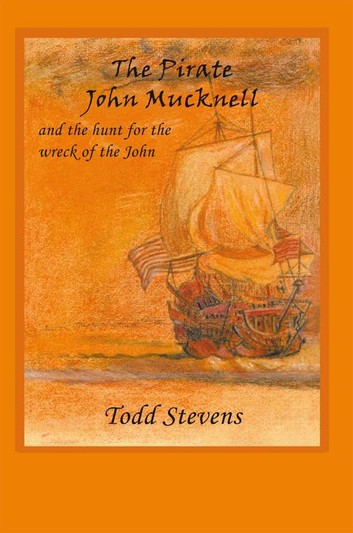The Civil Wars
By the 1620s, Scilly’s defences were in need of repair and
improvement. Earthworks were built surrounding King Charles’ Castle, and the
magazine, still standing today, was built by the gate of the Garrison. Further
defences were added in the years up to 1651, particularly by the Royalist
garrison, who made good use of the coastal geography, placing batteries on
rocky points, making direct frontal assaults very difficult.
During the First Civil War (1642-1646), the Scilly Isles
were in Royalist hands, under the governorship of another Sir Francis Godolphin
(1605-1667; grandson of the builder of Star Castle). From here a small fleet of
Royalist privateers operated, and following the final surrender of Royalist
forces in south-west England in March 1646, it was to Scilly that Charles,
Prince of Wales, fled. Following Charles’ departure to Jersey, a Parliamentary
naval blockade led to the surrender of Scilly. But in 1648, the garrison
rebelled against the governor and declared for the King.
Sir John Grenville (1628-1701) was installed as Royalist
governor. Under his command, Scilly became a major privateering base, preying
on both Dutch and Commonwealth shipping. The Dutch dispatched a fleet under the
command of Admiral Maarten Harpertszoon Tromp – a threat which prompted a
Commonwealth expedition to retake Scilly in April 1651. (A bizarre diplomatic
relic of this conflict was that Scilly remained technically at war with the
Netherlands until 1986!)
The Parliamentarian
invasion of the Scilly Isles
The fleet of Parliamentary warships dropped anchor off the
sandy shores of the Scilly Islands on 13 April 1651. Royalist pirates had
preyed on Parliamentary and Dutch shipping in the Western Approaches since a
mutiny three years before had transformed the tiny archipelago into a pirate’s
haven.
Admiral Robert Blake sent 40 boats full of musket-toting
marines against Tresco Island on 17 April, where he hoped to gain a foothold. The
strength of the fortifications on St Mary’s ruled out a direct assault, and
Admiral Robert Blake instead focused attention on Tresco. He eventually landed
on Tresco’s east coast, taking Old Grimsby and its blockhouse, before moving
inland and striking against Kings Charles’ Castle, whose defenders chose to
blow it up to prevent capture. By 20 April 1651, Tresco was in Commonwealth
hands.
This would allow him to prepare for an invasion of the main
island of St Mary’s, where Sir John Grenville’s Royalists benefited from the
strong ramparts of Star Castle. On the second night, a fierce melee with swords
and clubbed muskets drove the Royalist forces to St Mary’s.
Blake established a battery at Carn Near, the southernmost
point, from which he could bombard St Mary’s Pool and harbour.
Over the next two weeks, Blake maintained a steady pressure,
even as negotiations for surrender were under way. On 23 May, Grenville
surrendered after negotiating favourable terms that allowed his men to return
to Scotland or Ireland. He even received compensation for equipment left behind.
Following its capture, many of Scilly’s existing
fortifications were maintained, while on Tresco a new fortification was erected
in 1651/2, immediately below King Charles’ Castle. Cromwell’s Castle – as it
became known – was a tall, round, rubble-built, two-storey gun tower, with an
appearance that appears to anticipate the later Martello towers. The new work
could mount six roof-top cannon.
Following the Restoration, Scilly’s defences declined. In
1715 the engineer Colonel Christian Lilly found the island’s defences in a poor
state of repair, and set about a series of improvements as part of a wider
review of the defences of the south-west coast of England.
The Dutch
In 1651, two years after the beheading of Charles I, several
of the islands around England’s coast were still in the hands of Royalist
sympathisers. These were forced to make a living by piracy, and were
indiscriminate in choosing their prey. Sir John Grenville’s forces on the Isles
of Scilly were particularly successful as they effectively controlled the
western entrance to the English Channel. Eventually the Dutch Admiral Tromp
declared war on Sir John Grenville and moved a fleet against the islands. Perhaps
as a direct result of this (as the Commonwealth couldn’t let even a potential
ally occupy such a strategically important group of English islands) the
English admiral Blake was directed also to go to the islands, and in May he
succeeded in capturing them.
Tromp appears to have left the Scillies on or immediately
after the 12th June, 1651.
Tromp’s diary on page 63.
“On June 12th I arrived off the Scillies with 3 ships
and sent Capt. Cornelis Evertsen aboard Blake’s ship……. Blake declared that
the Scillies had capitulated on June 3rd…….. when I learned that
information and perceived that there was nothing more to be done, I went off on
a cruise around the Channel Islands and along the adjacent French coast, from
there past the Forelands into the north sea as far as off Yarmouth……. and
arrived myself off Brielle on June 30th.”

The Pirate John Mucknell and the Hunt for the Wreck of the John
by Todd Stevens
This is the true relation of the treacherous, mutinous, and
violent acts of the pirate Captain John Mucknell. It tells of how he came to
steal a brand new 44 gun flag ship, the John, only to loose her upon the rocks
of Scilly, where a pirate fleet he commanded were then based. Operating in the
name of King Charles I, Mucknells ships wreaked havoc upon shipping, of all
trading nations, in the western approaches during the English Civil War; until,
as it was then written that God, or the gallows, make an end of him The story
also incorporates a modern day hunt for the wreck.